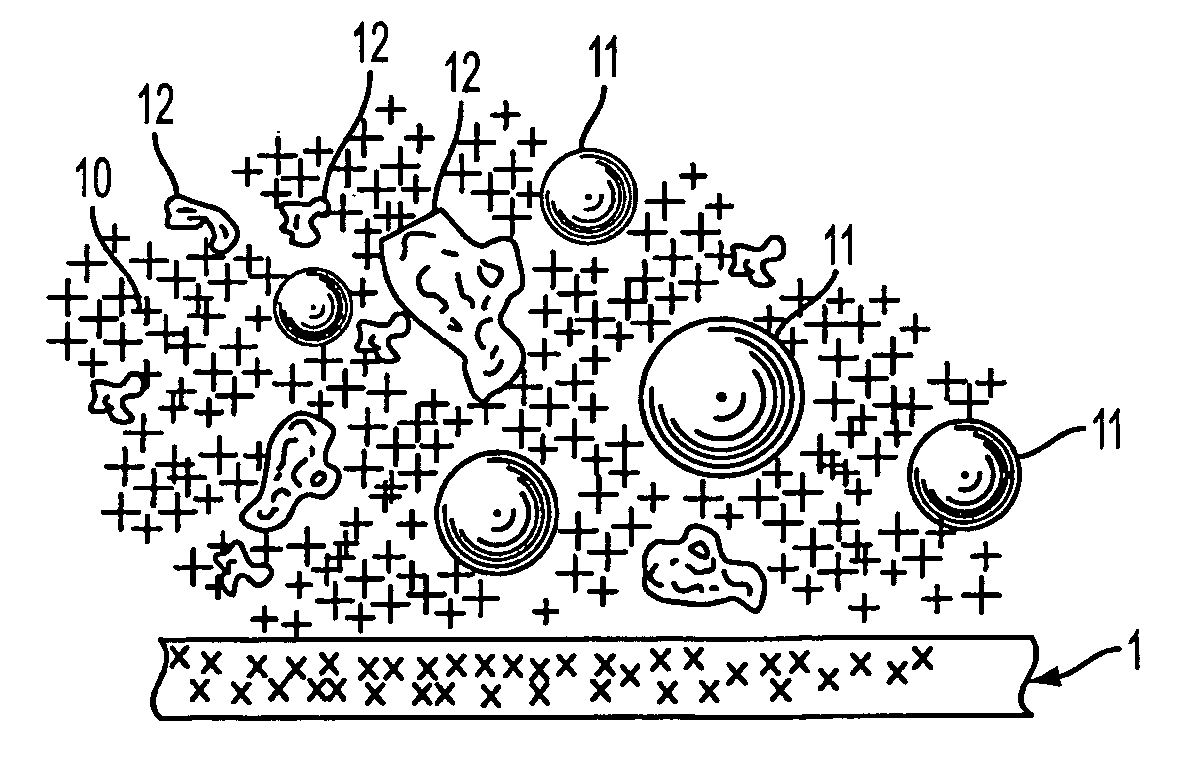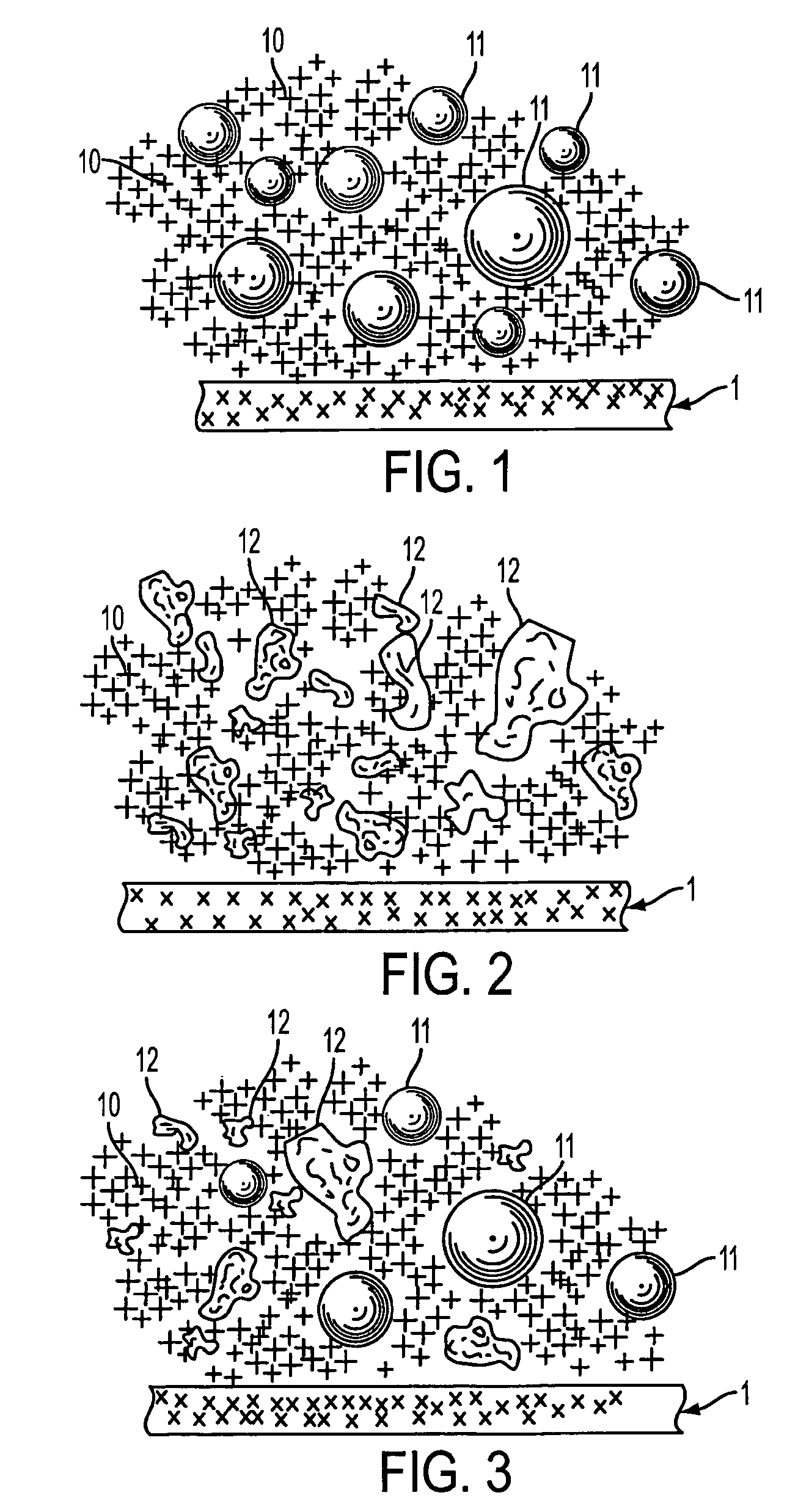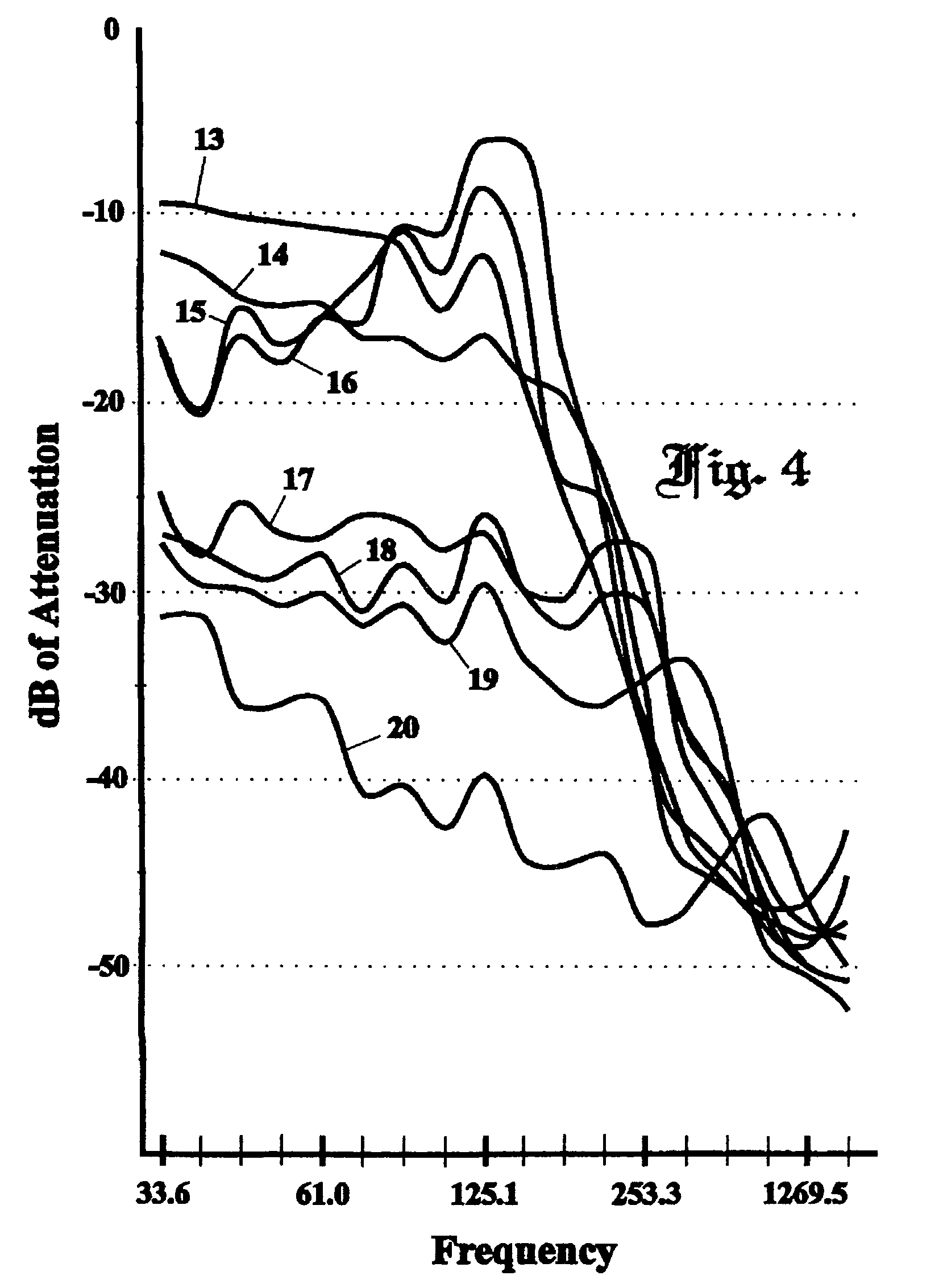Composite acoustic attenuation materials
a technology of acoustic attenuation and composite materials, applied in the direction of instruments, synthetic resin layered products, transportation and packaging, etc., can solve the problems of few material manufacturers even reporting attenuation values below 125 hz, limited structural strength, rapid worsening of noise attenuation, etc., to enhance the acoustic attenuation and vibration damping of materials, the effect of superior structural capability
- Summary
- Abstract
- Description
- Claims
- Application Information
AI Technical Summary
Benefits of technology
Problems solved by technology
Method used
Image
Examples
example 1
[0080]Laboratory measurements performed on various embodiments of this combination have shown a high-performance-to-weight ratio. In this example, the base polymer matrix was polyester and incorporated filler particles of differing acoustical impedances, high and low. The high-impedance filler was aluminum particles of random shape and varying in size from approximately 10-80 microns in their largest dimension; these occur in the composite matrix material in the proportion of five parts per hundred, by weight. The low-impedance filler was glass micro-balloons, spherical in shape and varying in size from approximately 10-80 microns in their largest dimension; these occur in the composite matrix material in the proportion of ten parts per hundred. This material, in laboratory measurements where artificial stiffness in the measurement method was introduced, produced 40+dB of acoustic attenuation.
example 2
[0081]A silicone rubber material measuring approximately 0.20 inches in thickness and optimized in accordance with parameters set forth in the instant invention and U.S. Pat. No. 5,400,296 was affixed to one of three decoupling materials and placed on a vibrating surface to simulate a material mounted to a wall or floor containing structure-borne acoustical energy. Two of the decoupling matrices were urethane foams, one of which had been optimized and one which was unadulterated urethane. The third decoupler employed the teachings of the instant invention and was of a fibrous nature. The thickness of all the decouplers was approximately 0.25 inches. As can be seen from FIG. 11, at the lower frequencies of interest, the fiber decoupler yielded significantly better energy isolation than the two foam decouplers. At frequencies below 31.5 Hz, the non-optimized decoupler tended to provide slightly better isolation than the optimized foam. This tendency is supported by the fact that the o...
PUM
| Property | Measurement | Unit |
|---|---|---|
| frequencies | aaaaa | aaaaa |
| frequencies | aaaaa | aaaaa |
| diameters | aaaaa | aaaaa |
Abstract
Description
Claims
Application Information
 Login to View More
Login to View More - R&D
- Intellectual Property
- Life Sciences
- Materials
- Tech Scout
- Unparalleled Data Quality
- Higher Quality Content
- 60% Fewer Hallucinations
Browse by: Latest US Patents, China's latest patents, Technical Efficacy Thesaurus, Application Domain, Technology Topic, Popular Technical Reports.
© 2025 PatSnap. All rights reserved.Legal|Privacy policy|Modern Slavery Act Transparency Statement|Sitemap|About US| Contact US: help@patsnap.com



